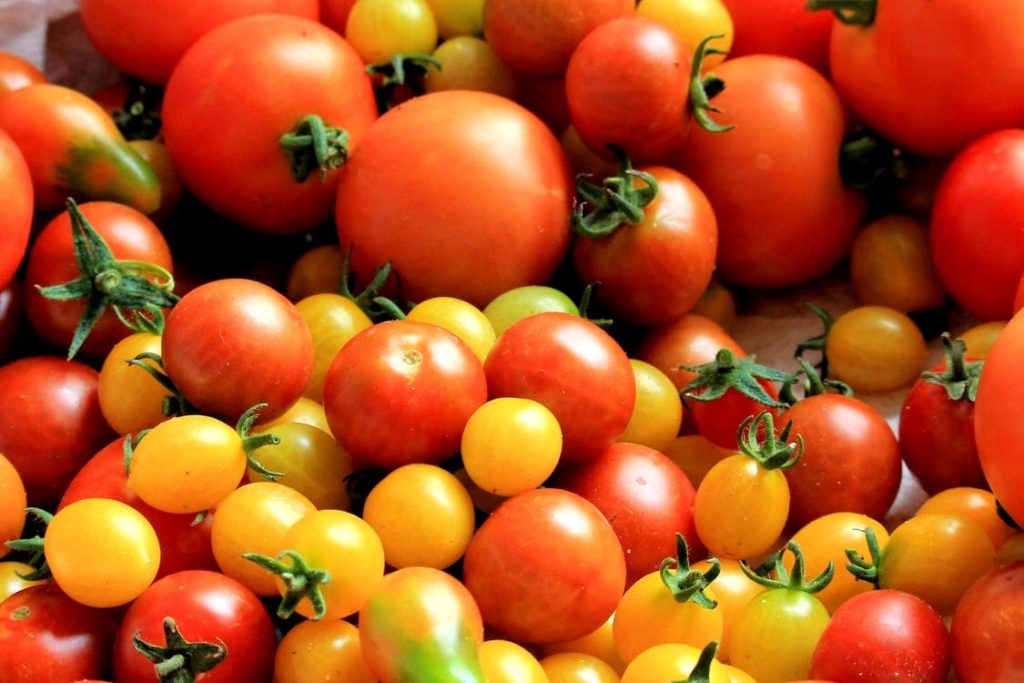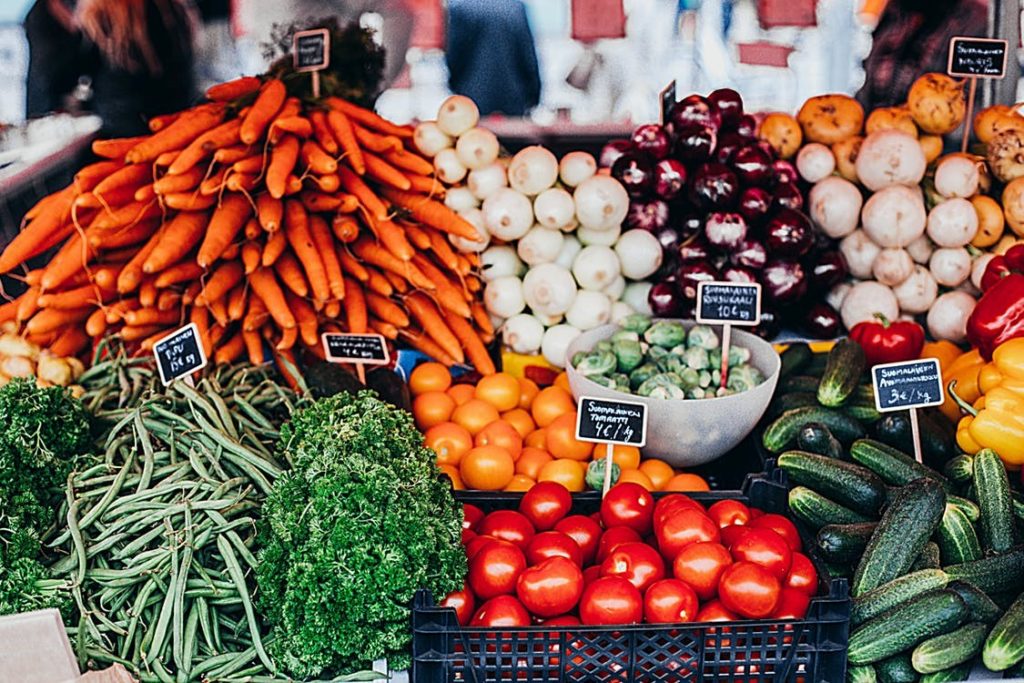By: Amanda Sia
Welcome back for the second installment of “Building a Better Boba Ball.” In Part 1, we covered recent advancements in biotechnology, such as next-generation sequencing (NGS) and gene-editing technologies like CRISPR. Today’s post explores their application in greater detail – we will see several examples of their usage in crop improvement as it relates to product development.
Gene-editing techniques such as CRISPR and TALEN can be used to modify and study genes in various ways, from “knocking out” genes to editing base pairs as seen in the infographic below. From a crop improvement standpoint, we can use these methods to enhance crops through three major ways – increased yield, stress resistance, and quality improvement.

For those who are interested in the nitty-gritty details and mechanisms of precision plant breeding methods, here is a good journal article to start with.
Increased yield and stress resistance have been the mainstay traits of plant breeding efforts for a long time, from the development of hybrid crops to transgenic crops, and now to gene-edited crops. Be it the development of flood-tolerant rice or increasing yield by breeding plants to allocate more resources to fruit production, these cornerstone traits are no doubt hugely important to food security, the livelihoods of farmers, and sustainability.

Most rice varieties are heavily damaged if submerged in water for more than four days, but new varieties could allow these plants to withstand up to three weeks of being underwater (Image by thanhoa tran)
There are already numerous articles on how recent biotech advancements can help increase yield and stress tolerance. Thus, I will focus on the “quality improvement” portion of crop enhancement, where the aim of modification might include (but is not limited to) improving food crop’s composition, nutrient content, flavor, appearance, storage stability, etc. I will focus on traits that are closer to the consumer level. Let’s dive in!
How can ag biotech help deliver value-added traits for food developers and consumers?
These new technologies and the open regulatory environment have already inspired innovation in product development, from more stable food products to solutions to processing problems. Since the barrier to entry is now lower than before, many of these projects are (unsurprisingly) driven by start-ups. Here are a few examples of what has been done and what could be done.

Brown Coffee Beans by Toni Cuenca
Coffee Decaffeination: Removing the caffeine compound in coffee while trying not to remove some of the hundreds of flavor compounds that give coffee its distinct flavor is difficult. The decaffeination process can also remove or alter healthy compounds typically found in coffee. Tropic Biosciences, a start-up founded in 2016, has already successfully used gene editing to produce a variety of coffee bean that is naturally decaffeinated, bypassing some of the challenges of traditional decaffeination. Those of us who can’t tolerate caffeine but still love our cup of joe – this is for you! Consumers benefit from better tasting decaf that is potentially cheaper too. Food developers also benefit since they can bypass traditional decaffeination steps.
Better Berries: Plant genomics startup Pairwise is collaborating with North Carolina State University to study over 300 unique species and accessions of berries. The idea is to understand the natural genetic variation in berries, such as how different genes affect observable physical traits of berries, and to use this information to breed better berries (Bonus: the data they collect will also be released to the public). What do better berries look like? For instance, the company wants to see berry plants modified so their traditionally delicate berries can be picked by machines or drones, reducing laborious work. There is also the potential of improving the shelf-life of berries and reducing their production costs, making them a more accessible healthy snack.

Blackberries and raspberries by Daria Shevtsova
Domestication: Gene-editing technologies can also accelerate the domestication of wild species or undervalued crops instead of relying on thousands of years of crop domestication. Take wild legumes for instance – they’re a great source of protein, fiber, and micronutrients. Problem? Many legumes contain high levels of antinutrients such as phytate and lectins, which can interfere with the body’s ability to absorb certain nutrients (this is also why many legumes must undergo processing steps like soaking, germination, or dry heat before consumption to decrease the levels of certain antinutrients).
“Domestication, the process of hereditary reorganization of wild animals and plants into domestic and cultivated forms according to the interests of people.” – Britannica
To domesticate these wild legumes over generations of breeding so they produce less antinutrients will take a long time. What if we can accelerate the domestication of wild legumes using gene-editing technologies? Researchers have successfully used CRISPR to domesticate undervalued crops such as weeping rice grass and wild field cress for traits such as better seed oil quality. Domestication of wild and underutilized legumes so they have less antinutrients can help incentivize people to plant and eat them. Underutilized and wild legumes have been identified as effective way to mitigate protein-energy malnutrition in tropical developing countries, increase food security, and be an efficient crop rotation tool.

Corn was domesticated from the Mexican wild grass, teosinte, over 8000 years ago (Image from Wikipedia)
Can we have delicious tomatoes again?
Fruits and vegetables have, for a long time, been plagued with the problem of perishability. Just ask any busy college student who’s bought too much spinach and forgot about it in the back of their fridge till it’s too late. Needless to say, plant breeding efforts in the past were primarily focused on storability and shipability, be it on tomatoes, melons or strawberries. While extending the shelf life for fruits can reduce food waste, it feels like a zero-sum game to get there, because, in the process of selecting cultivars that have the best shelf life or are the easiest to pick off the vine, we often end up losing flavor and nutrition.
While people may want healthier food, taste is still king and the number one purchase criteria for consumers. Encouraging people to eat healthier doesn’t mean just producing the most nutritious fruits and vegetables – flavor and appearance have a huge influence on consumer eating habits. Can we have mass-produced tomatoes that actually taste good again? Believe it or not, the typical tomatoes you buy at grocery stores today are a far cry from how delicious they used to be. Thankfully, multiple research groups around the world are working on using CRISPR to make better-tasting tomatoes that don’t sacrifice shelf-life. Other groups are working on increasing the nutritional content of tomatoes, such as identifying molecular markers that can result in higher beta-carotene accumulation.

Tomatoes by Pixabay
You might be asking yourself, how are these new precision breeding technologies different from genetic modification (GM) when it comes to breeding better-tasting tomatoes? As mentioned in Part 1, the immense cost of developing and authorizing GM crops has led companies to focus on traits that appeal to farmers, not consumers, and on commodity crops, not fruits and vegetables. The use of cheaper and faster technologies like CRISPR and gene discovery can potentially help us regain crops lost to scalability and industrialization. Additionally, genetic profiling of native, indigenous, and wild species using better sequencing techniques like NGS can help us understand the genetic drivers for bioactive compounds, allowing us to incorporate these learnings into breeding programs to improve the nutritional value of commercial cultivars.
Pea Protein
One issue with pea protein that makes it hard to be incorporated into more foods is its bitterness. Food developers have exercised their ingenuity and created products which use other ingredients to help “mask” the bitterness of pea protein, or processing technologies to try to reduce bitterness. But can we actually breed the bitter compounds out of it using gene-editing techniques?
In the 1970s, selective breeding programs were able to reduce the amount of erucic acid, a bitter substance in canola oil, so that it was palatable enough for human consumption. Before that time, canola oil was limited to industrial usage (such as being a lubricant for steam engines in ships), since consumer acceptability was low due to its distinctive taste and greenish color. Today, they can be found in almost every American household, thanks to the plant breeding programs.
Similarly, we know that saponins are substances that make peas taste bitter, and that different varieties of pea can have different levels of saponins. If we can understand genetic drivers and gene expression that results in different saponins levels, we might be able to develop a commercial cultivar that is more palatable to consumers. Breeding peas to exhibit desirable taste profiles instead of adding a new ingredient or changing manufacturing processes can also help companies who are trying to develop clean label products.

We eat with our eyes and senses! (Photo by Daria Shevtsova)
Be it peas or mung beans, making plant proteins more palatable and familiar-tasting for the consumer can help with their adoption and help drive a cultural shift towards less consumption of meat. After all, taste is king. Besides taste, can we breed plant proteins to better mimic the texture and taste of meats and seafood? Can we breed them to have a more balanced amino acid profile, to combat issues of some plant proteins not being a complete protein? In fact, there is already work being done to examine biosynthesis pathways of essential amino acids in plant proteins. Basic research on the genes involved and their expression and regulation is going to be key, since limited availability of genetic resources of these plants has been a significant limitation. In the past, basic genetics and genetic research have produced foundational knowledge that was successfully leveraged to enhance levels of essential amino acids in crop plants. With all the new biotech toys at our fingertips, we have more capacity than ever to continue this trajectory.
Challenges – especially on the ethical and social front
I’m aware that throughout this article, I might have made out ag biotech advances as some sort of cure-all. However, along with the breadth of opportunities, gene editing technologies like CRISPR introduce new challenges that need to be addressed. There is excellent work being done on solving technical problems such as off-target mutations with gene-editing technologies, or alignment difficulties with next-generation sequences. That said, we need to think deeply about the ethical and social implications of these new technologies on our food supply, human health, and the wellness of the earth.

Photo by Nicolas Viethen
Consumers’ distrust towards big ag and applications of biotechnology in food is apparent. When transgenic (GMO) crops were launched, consumers’ concerns over how human health could be adversely impacted overshadowed how genetic modification has been utilized to fight malnutrition in parts of the world, such as through producing biofortified staple crops. The unjustified frenzy over human health impacts completely obscured the real issue with some GMO crops, which is the ecological damage they could have by farming practices such as increased herbicide use.
Proper education channels should be put in place to prevent gene-edited crops from being unfairly demonized. At the same time, the efficacy of gene-edited crops in achieving goals such as increasing the climate resiliency of our food crops or providing more nutritious fruits and vegetables needs to be continually evaluated. Science and regulatory agencies need to ensure that it’s not just gene-edited crops that try to increase yield at all costs that are in the pipeline, but that environmental stewardship and human health are considered in the process. With the barrier to entry lower with gene-edited crops compared to transgenic (GMO) crops, I hope to see the technology being used innovatively for crop improvement in a sustainable way.
How does food science fit into all of this?

Photo by Lisa Fotios
Food science by itself is already a fairly interdisciplinary field, with frequent collaborations from process & chemical engineering, sensory scientists, food chemists, microbiologists, agronomy, plant scientists, etc. However, I think that as classically trained food scientists, our lens of food science tends to be more focused on the manufacturing portion of the entire food production process. Food science might be interdisciplinary in nature, but we often work in silos. Additionally, the “interdisciplinary” in food science often refers to adjacent disciplines such as chemistry, engineering, and microbiology – not necessarily upstream & downstream disciplines such as agronomy, animal breeding, and consumer sciences.

It’s a tall order to require every food scientist or food science student to have expertise in all the fields I just mentioned above. However, it’s useful to know that they exist and how they feed into our whole food supply. Opportunities for cross-collaboration can arise when we are aware of the possibilities available. Cross-pollination between food scientists and agronomists, plant scientists, plant geneticists… can result in innovations that give consumers healthier and more sustainable options. Given the growing systematic nature of food issues, being a T-shaped person who can go deep but also go wide is going to be immensely valuable.
Take-Home Message
All of the plants that we consume today are mutants that arose thousands of years ago. Instead of waiting for these incremental mutations combined with multigenerational breeding to domesticate a wild species, advances in agricultural biotechnology allow us to do it faster and cheaper.
- Technology advancements and current regulatory environments present opportunities for breeding crops for better nutritional traits and improved functionality.
- Cheaper cost together with faster time-to-market allow small startups to join in on the action, opening up new avenues of innovation in product development.
- There needs to be a more holistic approach to food product development challenges, including looking at various opportunities downstream and upstream.
 Amanda Sia | Linkedin
Amanda Sia | Linkedin
Amanda graduated with her M.S. in Food Science at The Ohio State University. Her research focuses on using vibrational spectroscopy data to build predictive models for use in quality assurance settings. Amanda received her B.S. in Food Science from University of Minnesota (a shocking change of environment since she is originally from Malaysia, a very tropical country). When she is not scanning peanuts in the lab, Amanda likes to play squash, sing in the shower (sorry housemates), watch sappy Korean dramas, and play the guitar.






Leave a Reply